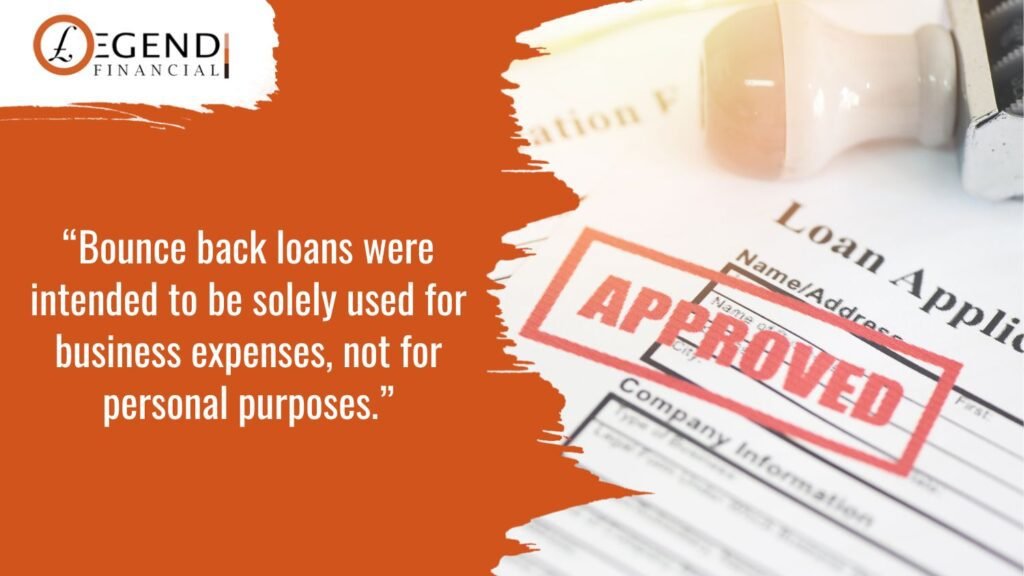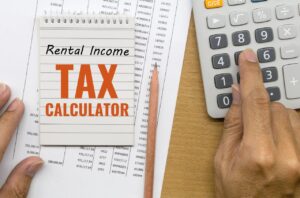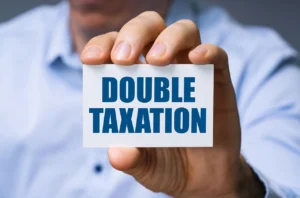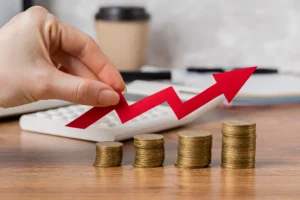The bounce back loan scheme (BBLS) was a government lending support initiative for businesses struggling financially at the height of the pandemic. For the first 12 months, borrowers were not obliged to pay any capital or interest on their loans—the government took care of the interest payments throughout this period.
However, it was just that—a loan. After that one-year repayment holiday, lenders are now collecting back what they are owed. Sole traders and companies who need help with paying can avail Pay as You Grow options. This article outlines what happens to them when they cannot pay their arrears despite this flexible payment scheme and their next best steps.
Quick Revisit to Bounce Back Loan
The Bounce Back Loan Scheme finance support began in May 2020 and closed in March 2021, both for loan and top-up applications. Since the scheme was run by the British Business Bank PLC and accredited consumer lending firms were given a hundred per cent government-backed guarantee of the loan amount, borrowers did not have to pay the capital and interest repayments for the first twelve months.
Millions of small to medium-sized businesses in the UK benefited from the loan that ranged between £2,000 and up to 25 per cent of borrowers’ annual revenue, with the maximum loan amount being £50,000. Interest remains at a fixed 2.5 annual percentage rate spread throughout six years. Opting for government refinancing support proved to be safer than other means.

Some were able to make early or full repayments within the one-year holiday repayment, as they come without fees, whilst others were pushed further into a financial abyss. The government is aware of how the impact of the pandemic still lingers. No one could have predicted the lockdowns and restrictions would actually take effect for a long time.
To provide further assistance, the BBLS repayment extensions were introduced in the form of Pay as You Grow (PAYG). Check it out below.
PAYG Options to Support Bounce Back Loan Repayments
Starting May 2021, BBLS repayments were due. However, long before that, in September 2020, the chancellor announced a great bounce back loan news—PAYG, also called bounce back loan repayment options. Three months before borrowers’ first repayment is due, their lenders will contact them for the following options:
- Extending loan from six to ten years
- Paying interest only for six months
- Taking a payment holiday for six months
These flexible repayment options are designed to lessen borrowers’ financial constraints on repaying their business bounce back loan, decreasing their monthly instalment obligations. The original length of the loan was six years. Initially, borrowers were given the option to extend their loans for up to four more years—making a total term length of 10 years.
Two more repayment options were added—both six months reliefs. The first option above can be used alongside any of the next two options. The second option (paying interest only) can be used up to three times throughout the loan term. The third (repayment holiday) can only be used once.
Given the default 12-month repayment holiday, opting for the third option gives borrowers 18 months (about one and a half years) of repayment holiday overall. It is important to note that whilst these options decrease monthly dues, interest accumulates and actually makes the total debt bigger over time.
PAYG Options Scenarios
The bounce back loan interest is at a fixed 2.5 per cent rate. Suppose John borrowed a total of £35,000 loan amount. Three months before his first repayment was due, the lending firm he owed contacted him for his eligible PAYG repayment options.
He availed PAYG’s four more years extension, making his total loan term length ten years. Assuming he did not make early repayments—only repaid after the one-year holiday repayment—his monthly dues will be reduced to £362 from £621. However, using the bounce back loan calculator, his total cash loan would now be £39,096 throughout ten years.
If John retained the original loan term length of six years and opted for the first time interest-only payment option for six months, then his monthly due will just be £73 instead of £621.
What Happens When Repayment is Impossible
Despite PAYG options, some businesses are still unable to pay off their bounce back loans, which, in most cases, happens because they have other financial commitments going on, such as mortgage, personal loans, supplier debts, and others—not just BBLS. The breathing space PAYG gave is still not enough, so borrowers will be forced to follow another route to write off their debts.

Sole traders and company directors face different situations when they can no longer catch up to their BBLS arrears or pay at all (state of insolvency), as their business structures suggest. Sole traders are one with their businesses, so they are liable for any of their gains and losses. Their bounce back loan is considered a personal loan.
Limited companies, on the other hand, enjoy limited personal responsibility when they could not make repayments despite PAYG, as long as they did not misuse their funds. Both will have to go through the insolvency route and, depending on their business structure, either bankruptcy or liquidation.
Availing of PAYG options to repay a bounce back loan will not affect their credit score. However, not being able to catch up with their BBLS arrears nevertheless can greatly affect their creditworthiness. BBLS is treated the same as other refinance agreements and loans, especially during insolvency and/or liquidation, so their negative record will be reflected in their credit history.
Insolvency Routes: Sole Traders vs. Companies
When a business is sure that it cannot repay bounce back loans and other financial commitments (including tax arrears) whether in the medium or longer term, it most certainly is insolvent. Sole traders and limited companies follow different routes to leave behind their debts.
Entering into a formal insolvency agreement seems to be the last means of business rescue. It is a wise move for businesses not to wait for creditors to petition the court for HMRC bounce back loan investigation and volunteer to enter insolvency status themselves.
Sole traders can opt for Individual Voluntary Arrangement (IVA), whilst limited companies can apply for Company Voluntary Arrangement (CVA). They may be granted any of these repayment options when they did not misuse their bounce back loans. Examples of BBLS misconduct or fraud include the following:
- Using BBLS funds for personal use
- Paying other creditors than others (e.g., BBLS and HMRC)
- False information on a loan application (e.g., loaning for BBLS when the company was insolvent, etc.)
- Dissolving the business to avoid BBLS repayments
Criminal prosecutions may happen once the business is proven to have committed fraud or misconduct. For now, here are their next steps when facing insolvency:
Sole Traders
As sole traders hold personal liability over their debts and do not have a separate company, they do not have the option to have their business liquidated when insolvent. To write off their loans completely, their best option is to apply for a formal insolvency arrangement via Individual Voluntary Arrangement (IVA), wherein all their debts will be included, and loan recovery will be through the UK insolvency law.
The law maintains that creditors cannot include the sole traders’ home and car in their debt recovery unless they are going through bankruptcy. The sole trader will be investigated for any misconduct or mis-navigation of BBLS funds. Once the majority of their creditors agree with the IVA, sole traders can put all their debts into one monthly payment over a period.
However, it is highly likely that the business will become bankrupt or dissolved during insolvency. Recall that bounce back loans were intended to help with business expenses, not for personal use. If the sole trader is found to have been misusing their BBLS funds or guilty of other misconducts aside from going bankrupt, their bankruptcy may undergo a restriction order that can extend the consequences for up to 15 years. Their credit will be restricted, too.
Company Directors
Limited companies, on the other hand, enjoy limited liability for their business. If they are shown to commit no misconduct on their loan and did not provide a personal guarantee for it, but repayment is still impossible, the lenders will turn to the government for repayment. However, this only applies to companies if they are insolvent.

Company directors can apply for a Creditor’s Voluntary Agreement (CVA), which is a limited company’s version of IVA, instead of waiting for their creditors’ compulsory liquidation. As they initiate the process, CVA gives them more control, such as being able to choose their own insolvency practitioner and be investigated with lesser pressure and length than compulsory liquidation.
They will initially need the approval of all creditors under their insolvency practitioner’s guide and undergo investigations into whether they were eligible for the BBLS funds in the first place, amongst other factors. Once granted, CVL allows them to collate their unsecured loan, including BBLS, into one monthly payment over a long term. CVL is something to plan seriously, though, since if limited companies fail, they will be subject to normal debt recovery.
Through CVL, their chosen insolvency professional will handle the entire process, from identifying and valuing the business assets, selling them, and distributing the sales amount to the creditors in line, according to which matters the most. After liquidation, the business can no longer operate as a legal entity.
FAQs About Bounce Back Loan
How Can I Keep up with My Tax Arrears Whilst Dealing with Bounce Back Loan?
For qualified insolvent limited companies, HMRC provides them with a corporation tax payment plan, officially known as time-to-pay (TTP) arrangement, to help them catch up with their tax debts through instalments over a set period. They can pay their corporation tax, national insurance contributions, and VAT through TTP.
Can I Still Apply for Pay as You Grow?
Currently, PAYG is still in effect. Since the bounce back loans are over a period of six to ten years, businesses can reapply for interest-only payment thrice during their loan and repayment holiday once. Lenders are proactively giving their borrowers their eligible repayment options three months before their first due date of repayment.
How Do I Know if I Have Misused the Bounce Back Loan?
Businesses that are unsure whether they used BBLS funds according to the law or not should consult an insolvency practitioner or a business consultant. Investigations will revolve around whether they were eligible for the funds in the first place and if they did not commit any misuse of the loaned amount. To avoid heavy repercussions, expert assistance is crucial.
What Specific Repercussions Will I Face if I Misused the Bounce Back Loan?
HMRC has designated a bounce back loan loophole fraud staff to investigate how businesses used BBLS funds. Currently, repercussions are unclear, but there have been some cases where directors were jailed due to the severity of their misconduct.
How Legend Financial Can Help
When bounce back loan repayment is still impossible despite PAYG, there are other ways to write off the debt. Legend Financial is in touch with this government debt support from the very start. We are here to help sole traders and limited company directors find their best next steps and mitigate the potential repercussions. Reach us today!
References:
What to do if you can’t pay a bounce back loan. (n.d.). Retrieved from Harper
James: https://harperjames.co.uk/article/pay-bounce-back-loan/#section-1
I cannot afford to repay my Bounce Back Loan – What are my options? (n.d.). Retrieved from UK Liquidators: https://www.ukliquidators.org.uk/company-debt-advice/i-cannot-afford-to-repay-my-bounce-back-loan-what-are-my-options
What to Do if You Can’t Repay a Bounce Back Loan. (17 July 2023). Retrieved from Company Debt: https://www.companydebt.com/articles/if-you-dont-pay-back-a-bounce-back-loan/
Bounce Back Loan Scheme (BBLS) Pay As You Grow (PAYG). (n.d.). Retrieved from Bank of Ireland UK: https://www.bankofirelanduk.com/
business/business-covid-hub/bbls-pay-as-you-grow/
Pay as you Grow. (n.d.). Retrieved from NatWest: https://www.natwest.com/business/support-centre/service-status/coronavirus/pay-as-you-grow.html
BOUNCE BACK LOAN REPAYMENTS. (n.d.). Retrieved from Metro Bank: https://www.metrobankonline.co.uk/business/
borrowing/bouncebackloan/











